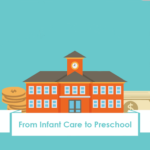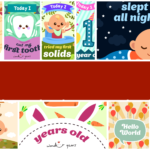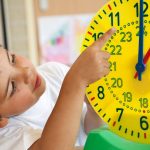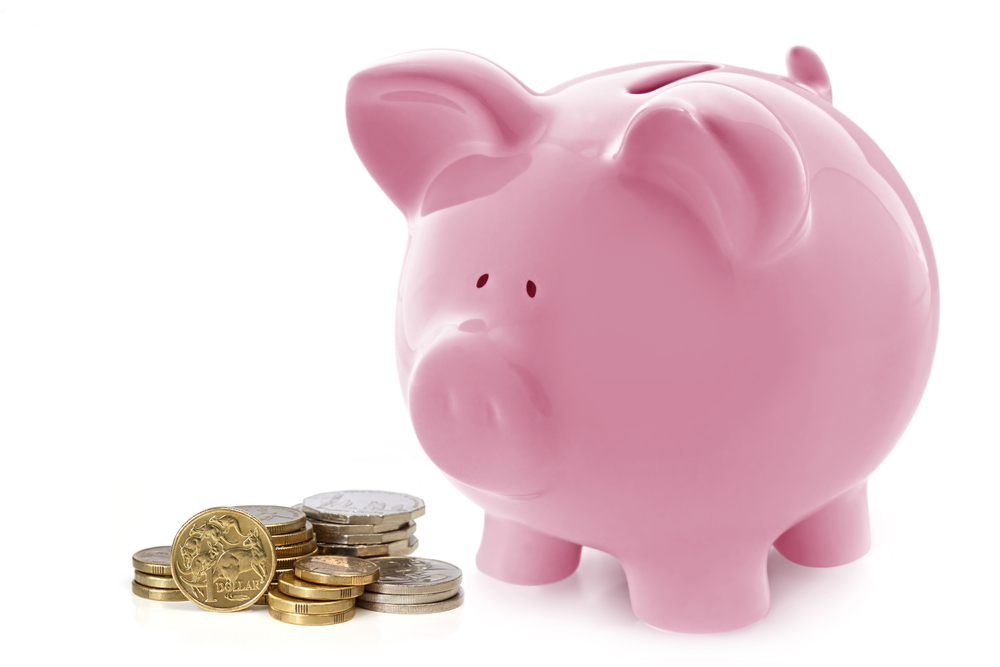
Do you remember spending 20 cents for a milo? Or buying a bowl of noodles for 50 cents?
With economic inflation, what we received as kids no longer apply to our children.
In today’s market, how much pocket money should we give our kids for primary school? And what do they spend it on?
Pocket Money for Primary School Kids
One of the excitements every primary one student feels at the start of school is receiving pocket money. They can use their pocket money to buy food and drinks from the canteen during recess or go to the bookshop to buy any stationery that they fancy.
To help parents decide how much pocket money to give their kids, we breakdown the expenses that your kids will make during their school days.
Canteen Food and Drinks
Most school canteens have a variety of food stalls that offer staple foods like Chinese noodles, Chicken rice, Western burgers to fancier dishes like Japanese sushi or Korean rice/noodles. The prices of food range from $1 to $1.80. There will also be food stalls that sell snacks like chicken nuggets (5 for $1), fishballs, charsiew bao, bread buns or packaged nibbles.
Most primary schools adopt a healthy eating stance and will offer fresh fruits on the side with any meals purchased.
Bookshop Spending
The bookshop is the star attraction for many primary school kids. Like a kid in a candy store, the bookshop offers a wide range of shiny and colourful stationery that call out to our young shoppers with new money to spend.
Other favourites that our young ones can spend their pocket money on include music recorders, inspirational notebooks and fun gimmicks like compasses or rubik’s cubes.
Savings and Emergency money
Some parents give their kids extra money to save. You might also want to consider giving your child an extra dollar or two to keep in their wallets or school bags as emergency fund, in case they need to buy a notebook for school or forget to bring their daily pocket money to school.
If you are keen to teach your kids about savings, give them extra and have them put the extra cash into a savings box as soon as they get their allowance for the week or month.
Transportation
Many parents do not include transportation money as part of the pocket money for kids. This is because they pay for the school bus separately or top up the EZ-link cards for their kids.
Read also: “Is My Primary School Child Reading Enough”? – Top Tips to Raise a Reader
How much pocket money to give primary school children?
The amount of pocket money you give to your child varies between families. It also depends on the appetite of your child or the school activities your child participates in.
If you feel your child has a larger appetite, you may wish to allocate more pocket money for food expenses. Similarly, if your child needs to stay back for after-school co-curricular activities (CCA), you might need to allocate extra pocket money for lunch.
Based on the table below of average costs of food, drinks and stationery in schools, most parents give their children a daily allowance from $2.50 to $5.
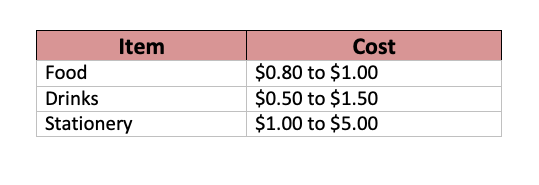
The best way to determine how much pocket money for your primary school kid is to walk through the school canteen and the bookshop when you have the chance, to check out the prices of the food and stationery. You can usually do this when you go to the school to buy school uniforms or textbooks before the school year begins. Alternatively, you can also check out the prices during the first two days of primary one when parents are allowed to enter the school.
Increase in Pocket Money for Primary School
Pocket money for kids should grow as your child progress up the levels of primary school. Some parents increase the pocket money allowance every two years (p1-2, p3-4, p5-6), while others increase each year by a percentage or a dollar.
Have regular discussions with your child about their spending habits and check in once in a while whether the allocated pocket money given is enough. This will give you an indication if you need to give them a raise in their allowance.
Pocket Money for Kids – Daily, Weekly or Monthly?
Some parents worry that their primary one kids may lose their pocket money. Hence, they prefer to give the allowance to them on a daily basis. When your child is older (say in primary three), you might consider giving the pocket money on a weekly basis and graduate them to a monthly basis when they are in upper primary levels.
Giving pocket money to kids on a weekly or monthly schedule teaches them about ownership and money management – valuable lessons they will find useful later in life.
Read also: Choosing a CCA in Primary School: What to Consider
Every family has different parenting approaches to teach their children about money. How much pocket money will you give your primary school child?











